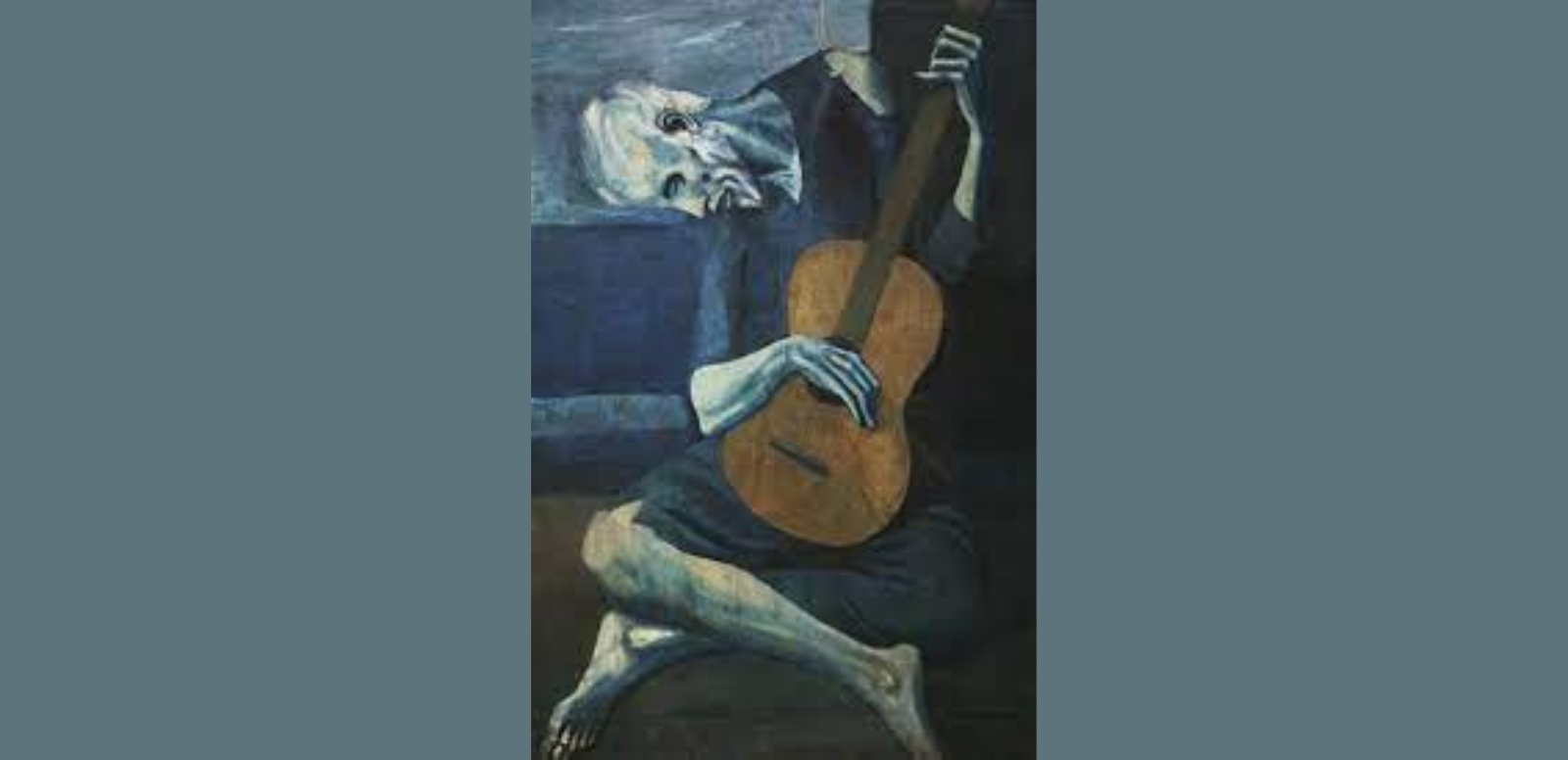
© Sucesión Picasso, VEGAP, Madrid, 2023
The Old Blind Guitarist (1903) is one of Picasso's paintings from his blue period (1901-1904). The picture was painted during his period of work in Barcelona, and presents the characteristic features of this period: cold and monochromatic blue palette, flattened forms, emotional and psychological themes of human misery and alienation, related to the work of artists such as Edvard Munch or the first Gauguin.
From 1900 until 1904 Picasso's work has melancholic tints. As Anatoli Podoksik explains in his book Pablo Picasso: "His work reflects the expressiveness of beggars in the face of the poverty and misery of his time. His monochromatic work based on the color blue manifests his sadness. The suicide of his friend Casagemas considerably marked his work during this sad period. The old blind guitarist shows the image of a sad, decayed and dying man. The pallor of his face, as well as his ungainly body and torn clothes, reflect sadness and misery. The soft shape of the guitar, which highlights distinct tones, reveals a certain poetry, perhaps hope. The drooping head makes a certain allusion to the alcoholism suffered by his great friend Carlos Casagemas".
In adhesion, although the face and the elongated hands of the guitarist are influenced by painters such as El Greco, the work shows traits of his unique cubist style. The work allows us to approach the artist's story, his emotional situation marked by the sadness of his friend who died tragically (Podoksik, 2008).
The Old Blind Guitarist is a work marked by mystery. Although the work apparently shows a man dressed in rags and looking tired while playing the guitar in the street, there is something else hidden behind this painting.
As Ana Bonilla explains in her book El espejo en que me vi: "It was not until 1998, more than twenty years after Pablo Picasso's death, that scientists and art curators, motivated by the remarkable female face hiding above the guitarist's neck, used X-rays and infrared lights to observe what was hiding behind the blind musician(...) Researchers at the Art Institute of Chicago along with the Cleveland Museum of Art discovered the outlines of a woman's face looking to the left with outstretched arms who appeared to be seated. X-rays also showed another female face facing right. A figure that may be related to another drawing by Picasso made between 1902 and 1903. After a thorough re-examination a torso, feet and the figure of a child being suckled appear."
In this connection, a letter dating from March 1903 was located in which the artist describes to a friend the scene hidden behind the old guitarist, a mother with her child, a bull and a calf. The latter can barely be seen to the right of the work (Bonilla, 2020).
References:

